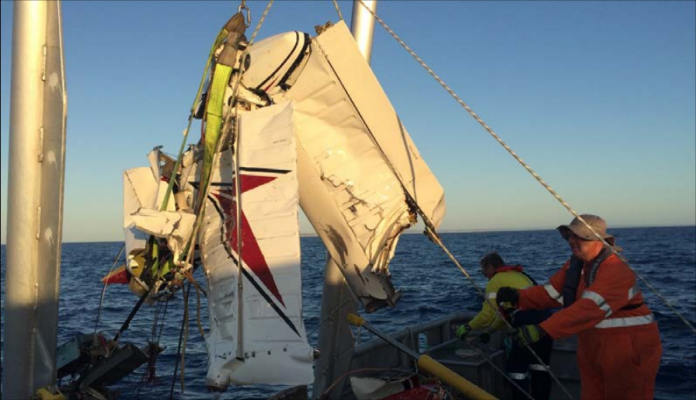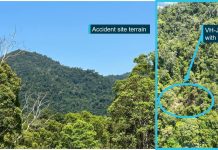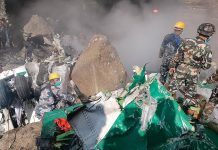
The Australian Transport Safety Bureau (ATSB) has released its investigation into the crash of a Piper PA-28 Cherokee that killed four people in January 2016.
The aircraft took off from Moorabbin, in Melbourne, and the aircraft entered an area of low visibility after passing over Point Lonsdale at the entrance to Port Phillip Bay, near Geelong.
The ATSB found the pilot had ‘conducted a 180-degree turn and initially tracked back towards Point Lonsdale, before heading south over the ocean’.
After about two minutes, the aircraft turned right again and entered a rapid descent. Witnesses saw it just before it hit the water in a nose-down, right wing-low attitude with the engine sounding as though it was producing power.
The ATSB found that due to the presence of low cloud and rain, near Point Lonsdale, the pilot probably became spatially disorientated, leading to a loss of control and impacted with the water. The risk of a loss of control in the conditions was increased by the pilot’s lack of instrument flying proficiency. (Three of the people on board were pilots, although none held an instrument rating. The ATSB was unable to determine who was flying the aircraft.)
The report cautions, ‘It is always possible that the actual weather conditions will be different to those forecast.’
‘Pilots conducting a flight under the visual flight rules make every effort to avoid areas of low visibility and plan for unforeseen eventualities. However, this is dependent on the pilot perceiving the risks of the situation, which is not inherently easy. Education and training in the practical application of meteorological principles has been shown to enhance pilots’ ability to recognise and respond to deteriorating weather conditions.’
CASA’s Aviation Safety Advisors will be addressing spatial disorientation in the new 2017-18 ‘Lessons for Life’ series of aviation safety Seminars which will be held around Australia over the next 12 months.
CASA has produced a video, 178 seconds to live which presents the risks of inadvertent flight into VMC in a harrowing, but memorable, way. It would be worth reviewing by VFR pilots as a practical act and memorial to this tragic crash.





The ATSB report is incomplete. Lifejackets were found floating in the water near the crash site. They were the hired variety. There are charged for if opened. LJs are to be worn when flying over water below 2000feet. VH-PXD did not get above 1500 feet anywhere on its fatal flight.
This flight was the classic case of Pressonitus. Pere pressure would have been a big factor that said they must leave on that fateful day. Who was flying? Who was making the decisions?
Flying over water at low level in poor vis is a receipt for disaster. ATSB records over the years show this. A VFR flight such as this should have stayed in visual sight of terrain and the coast at all times. THey elected not to and so sealed their fate. The aircraft had an AP. Was
it working? Not discussed.
There is an expression that says the sun shines on the wreck the next day. So true in this case.
I am also of the view that more wise more experienced people should have told these guys not to go that day. The people from that organisation it wouldn’t appear did not do that.
Sadly few PVT pilots know the rules & or stick to them 100% As mentioned peer pressure would have been alive & well in that plane. It will happen again & continue to do so, there’s nothing that can be done about it, just the way it is as man has been killing himself in all inventions ever made!
Would like t have seen some log book hours for the pilots involved. Not noted in the ATSB report.
I understand that the owner only held an old PPL Restricted and that the guys with him held the full PPL licences. Again not mentioned in the report.
Three pilots on board? Presumably all male? Couldn’t possibly be peer group pressure or “Press-On-Itis” or Testicular Infallibility, could it???